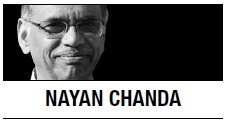Foreign pressure often provides governments with a handy lever with which to overcome domestic vested interests and push through long-overdue reforms.
The rules on agricultural subsidies set by the World Trade Organisation are one such tool.
A reform-minded Narendra Modi government should have taken advantage of them to make it easier to dismantle the nation’s populist and financially  ruinous policy of providing food subsidies as well as free water and electricity.
ruinous policy of providing food subsidies as well as free water and electricity.
Instead, New Delhi stood alone against all, threatening to scuttle the Trade Facilitation Agreement if it did not receive WTO assurance on its policy of stockpiling subsidised grain.
In the process, India has not only earned the opprobrium of its partners in emerging economies such as Brazil, China, Russia and South Africa, the Group of 20 and G33, but also blighted its own efforts to modernise trade.
Despite entreaties by many, the New Delhi government has refused to relent, hoping that its tough stance will win it brownie points with farmers in key states.
In the 1990s, when China was negotiating to enter the WTO, Beijing used the requirements of global free trade as a powerful lever to end many of the archaic practices of state capitalism.
In doing so, the Chinese government successfully launched the country on the path of phenomenal growth. It is a lesson India’s leaders would do well to consider.
It is high time that lawmakers at all levels start taking measures to wean India’s mostly rich farmers off the mother’s milk of subsidies, free electricity and water, and make agriculture responsive to the free market.
For too long, the government has purchased subsidised grains from local farmers ― often at higher than market prices ― and then distributed them cheaply to the poor.
The result has been a desultory and often corrupt food distribution system.
There has also been intensive utilisation and waste of groundwater, and a growing mountain of food grain.
On July 1, India had a wheat stock of 40 million tonnes, twice as much as it required.
While nobody questions the importance of providing cheap food to people living below the poverty line, the way the grain is processed and distributed distorts the economy.
It does this by incentivising farmers to produce wheat and rice in abundance, causing substantial wastage (by the government’s own admission, two million tonnes of grains go to waste every year) and producing budget deficits.
The solution is for the government to take advantage of the Aadhaar unique identification card, which contains the biometric details of the holder, to identify welfare recipients.
Linked to a bank account, it could be a useful vehicle to deliver subsidies in cash to those living below the poverty line.
Already, 640 million people ― half the population ― have the card.
Using this platform would not only allow people to buy whatever items they need, but it would also be fully WTO-compliant, falling into the so-called “green box” of allowable subsidies.
Ending water and power subsidies will be critical to avoiding massive water shortages and a resultant food crisis.
India is already the largest user of groundwater in the world, accounting for a quarter of the global total, since 60 per cent of the country’s irrigated agriculture and 85 per cent of drinking water depend on groundwater.
But the rapid depletion of its aquifers is pushing India into dangerous territory.
A recent World Bank report noted that India has only 20 years before its aquifers reach “critical condition,” when demand for water will likely outstrip supply.
Since groundwater is a critical buffer against the unpredictability of the monsoon rains, India’s millions will be exposed to hunger if the rain should ever fail.
It will be a great irony if, in its supposed fight with the WTO for food security, India hastens the ruin of its own agriculture.
By Nayan Chanda
Nayan Chanda has been the director of publications of the Yale Center for the Study of Globalization and the editor of YaleGlobal Online since 2001. ― Ed.
(The Straits Times/Asia News Network)



